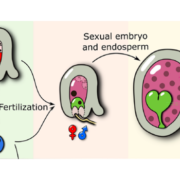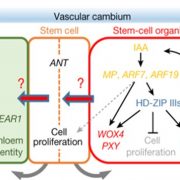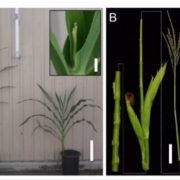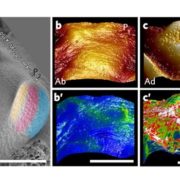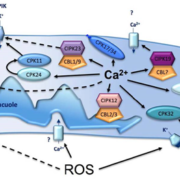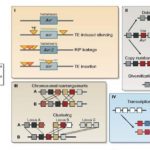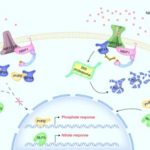Alternative usage of miRNA-biogenesis co-factors in plants at low temperatures (Development)
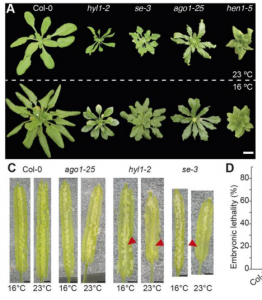 As in animals, plants produce microRNAs that are also key developmental regulators. Unlike some animals, plants are more exposed to environmental factors that alter cellular processes. Ré et al. show here that phenotypic defects produced by loss-of-function mutations in key proteins of Arabidopsis miRNA biogenesis machinery, such as SERRATE (SE) and HYPONASTIC LEAVES 1 (HYL1), are milder at low temperature (16°C vs 22°C). They show that at this temperature, the production of several miRNA is partially restored. Moreover, in a loss-of-function allele of the HYL1 cofactor, they identified that specific miRNA are either dependent or independent of this cofactor at low temperatures, where the ribonuclease excision step precision in pri-miRNA maturation is improved at low temperatures in the firsts. Interestingly miRNAs affected by temperature and HYL1 poses specific features related to their secondary structure. This suggests that low temperature could be helping to stabilize miRNA secondary structure, making cofactors more dispensable. Authors also discuss how this regulation could be evolutionarily relevant for environmental adaptation, for example, during the day-night temperature shift. This paper highlights that miRNA biogenesis is not constant and ubiquitous as previously thought, and open questions on how the environment influences these processes. (Summary by Facundo Romani) Development 10.1242/dev.172932
As in animals, plants produce microRNAs that are also key developmental regulators. Unlike some animals, plants are more exposed to environmental factors that alter cellular processes. Ré et al. show here that phenotypic defects produced by loss-of-function mutations in key proteins of Arabidopsis miRNA biogenesis machinery, such as SERRATE (SE) and HYPONASTIC LEAVES 1 (HYL1), are milder at low temperature (16°C vs 22°C). They show that at this temperature, the production of several miRNA is partially restored. Moreover, in a loss-of-function allele of the HYL1 cofactor, they identified that specific miRNA are either dependent or independent of this cofactor at low temperatures, where the ribonuclease excision step precision in pri-miRNA maturation is improved at low temperatures in the firsts. Interestingly miRNAs affected by temperature and HYL1 poses specific features related to their secondary structure. This suggests that low temperature could be helping to stabilize miRNA secondary structure, making cofactors more dispensable. Authors also discuss how this regulation could be evolutionarily relevant for environmental adaptation, for example, during the day-night temperature shift. This paper highlights that miRNA biogenesis is not constant and ubiquitous as previously thought, and open questions on how the environment influences these processes. (Summary by Facundo Romani) Development 10.1242/dev.172932


